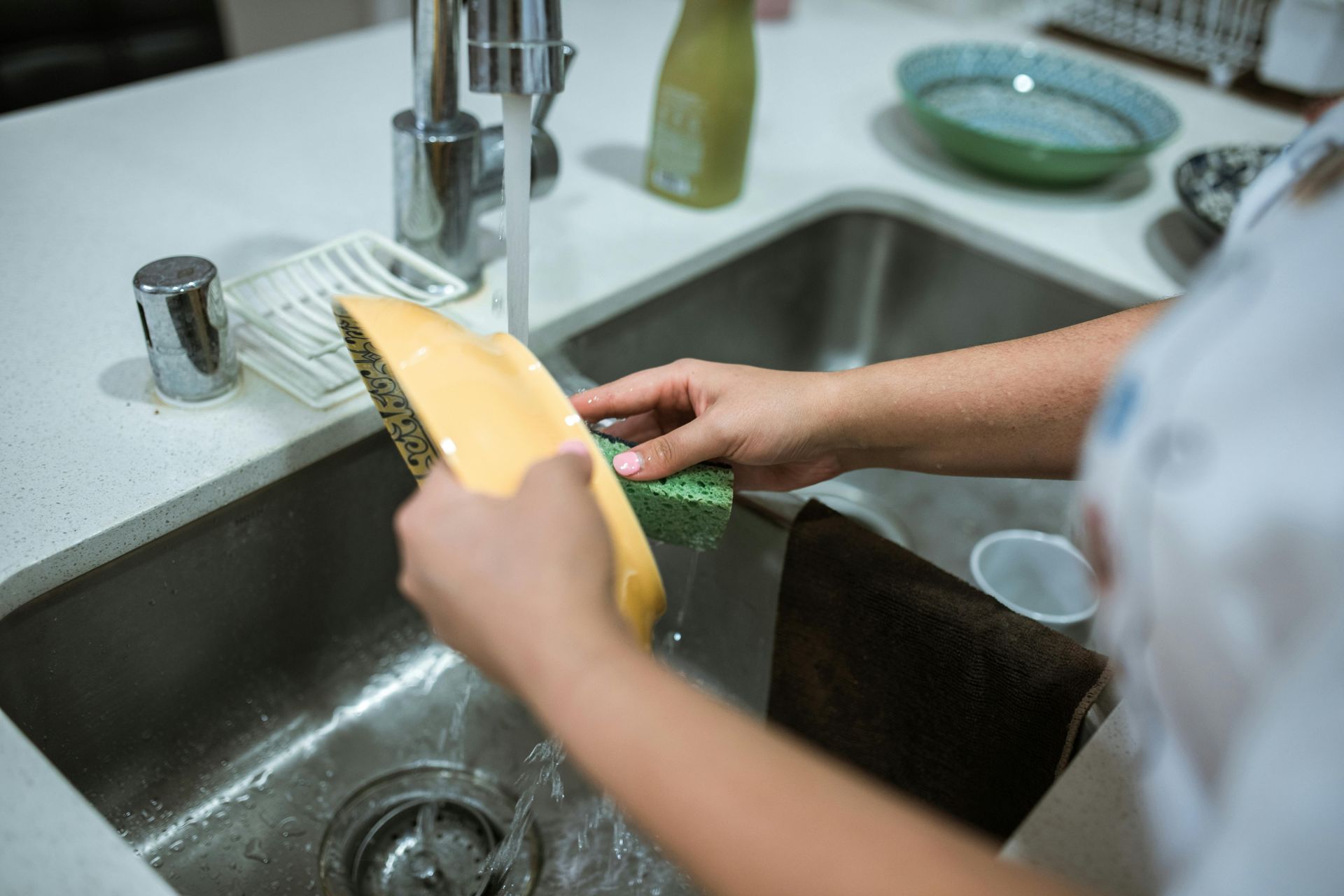
What’s the germiest part of a home? Most people might assume the toilet seat has the most germs. You might be surprised to find out the kitchen holds the number one and number two spots for ickiest objects. Dish rags and sponges top the list with number two being the kitchen sink! With the cold and flu season looming, let’s talk about how to keep your kitchen sink clean.
If you love kitchen sponges, make sure to frequently change them out for new ones. Since they are used so frequently, sponges often don’t dry completely which causes a breeding ground for germs. Kitchen dish rags should be changed daily. Kitchen dishwashing brushes are a good choice as they tend to harbor fewer germs than sponges and dishrags.
Between food particles, stagnant water, and grime the kitchen sink does need to be cleaned frequently. One inexpensive and non- toxic way to deep clean the sink:
-
Rinse the entire sink and clear the drains
-
Sprinkle baking soda over the entire sink.
-
Squirt dish soap on a clean cloth.
-
Scrub the entire sink using a circular motion.
-
Clean faucet and handles with soap and rinse.
-
Sanitize the sink. Common sanitizers are disinfecting bleach spray (found in many common cleaners), white vinegar, or rubbing alcohol. These all will kill viruses and bacteria that may be lingering.
You also should tend to the kitchen disposal drain. Have you ever noticed an unpleasant odor from the drain? The disposal with its nooks and crannies can build up grime and slime. Use dish soap and a scrubbing sponge to clean the underside and folds of the garbage disposal baffle. Often there will be a black gunk that is causing the odors. Rinse well. Baking soda in the drain can freshen up the smell as well.

Bonneville Park, 1500 N 800 W
Cascade Park, 200 N 925 E
City Center Park, 200 E 100 N
Community Park, 580 W 350 S
Northridge Park, 1750 N 165 E
Scera Park, 550 S 400 E
Windsor Park, 120 W 1250 N
Nielsen’s Grove, 375 W 2000 S
IHC Soccer Field, 600 W 400 N




